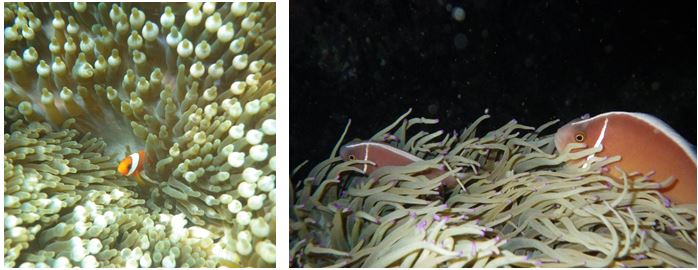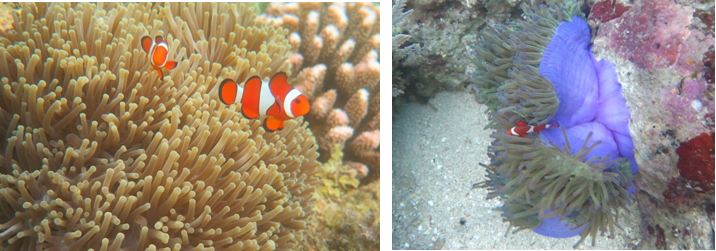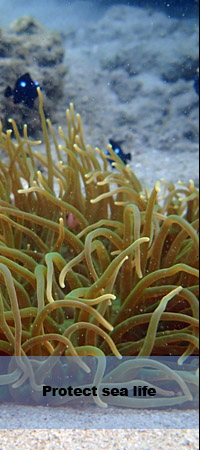|
There are 28 recognized species of clownfish or anemonefish. Clownfish perform an elaborate dance with an anemone before taking up residence. Its mutualistic relationship with sea anemone provides the clownfish with protection and shelter, while the clownfish provides the anemone nutrients in the form of waste while also scaring off potential predator fish. Fruther clownfish helps their Anemones to Breathe at night
All clownfish are born male. They have the ability to switch their sex, but will do so only to become the dominant female of a group. The change is irreversible. Clownfish adjust their size and growth rate according to their position in the group hierarchy, maintaining a well-defined size difference with respect to individuals above them in social rank.
Adults provide high levels of parental care to their young that hatch with well-developed swimming and sensory capabilities before embarking on about three-week pelagic larval phase, during which time they may disperse over long distances (more than 500 meters from their original anemone).
Clownfish are omnivorous and feed on a variety of prey items consisting of planktonic algae
and zooplankton, such as copepods and larval tunicates. They also feed on prey remnants left over from its host anemone’s feeding activity and dead tentacles from its host.
Clownfish are omnivorous and feed on a variety of prey items consisting of planktonic algae
and zooplankton, such as copepods and larval tunicates. They also feed on prey remnants left over from its host anemone’s feeding activity and dead tentacles from its host.

Photo on the left: Clownfish finding refuge deep in the anemone.
Photo on the right: Pink skunk clownfish (Amphiprion perideraion).
Photos © Endangered Species International
Spawning for some species of clownfish can occur year-round due to perpetually warm waters within the species’ range. Spawning is also strongly correlated with the lunar cycle, with most nesting occurring when the moon is full or nearly so. Once the female is ready to spawn, a conical whitish tube known as an ovipositor becomes visible and eggs slowly descend from her belly onto the nest site. Once eggs are laid, the male follows closely behind and fertilizes them externally. Spawning can last anywhere from 30 minutes to 2 hours. Clutch sizes vary widely between 100 to over 1,000 eggs depending on species and size of the female.

Photos: Western clown anemonefish (Amphiprion ocellaris) associated with large sea anemones.
Photos © Endangered Species International
Although clownfish sounds were recorded as early as 1930, the mechanism of sound production has remained obscure. However, clownfish are great singers that produce a wide variety of sounds, described as "chirps" and "pops" during reproductive and agonistic (associated with conflict) behaviors.
Human impacts on clownfish
Clownfish can be used as environmental indicator regarding the health of the coral reef ecosystem. A poor presence or absence of clownfish in the coral reef can easily indicate a declining or damaged reef
Clownfish can be affected by many human impacts including pollution, artificial light, increase in water temperature, sedimentation due to deforestation, overfishing, direct collection for the aquarium trade, and the killing of anemones due to bleaching and overharvesting. The Philippines, Indonesia and Papua New Guinea account for large percentage of clownfish imports (ocean collection) into the United States.
Just like corals, anemones have symbiotic relationships with microscopic algae known as zooxanthellae. Because of this symbiosis, they are susceptible to thermally-induced bleaching, during which those symbionts are expelled due to thermal stress. Bleaching has been observed in 7 of the 10 anemone species that host anemonefish.
Artificial light at night can cause reproductive failure in clownfish, therefore, lighting along coastal areas can affect clownfish life cycle including the entire coastal marine ecosystems.

Endangered Species International is a U.S.-based, international organization, and a nonprofit, tax-exempt corporation under Section 501(c)(3) of the U.S. Internal Revenue Code. Your donations are tax deductible under U.S. laws.
|











